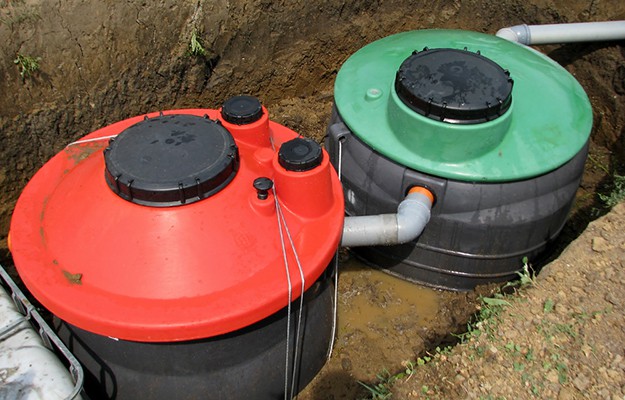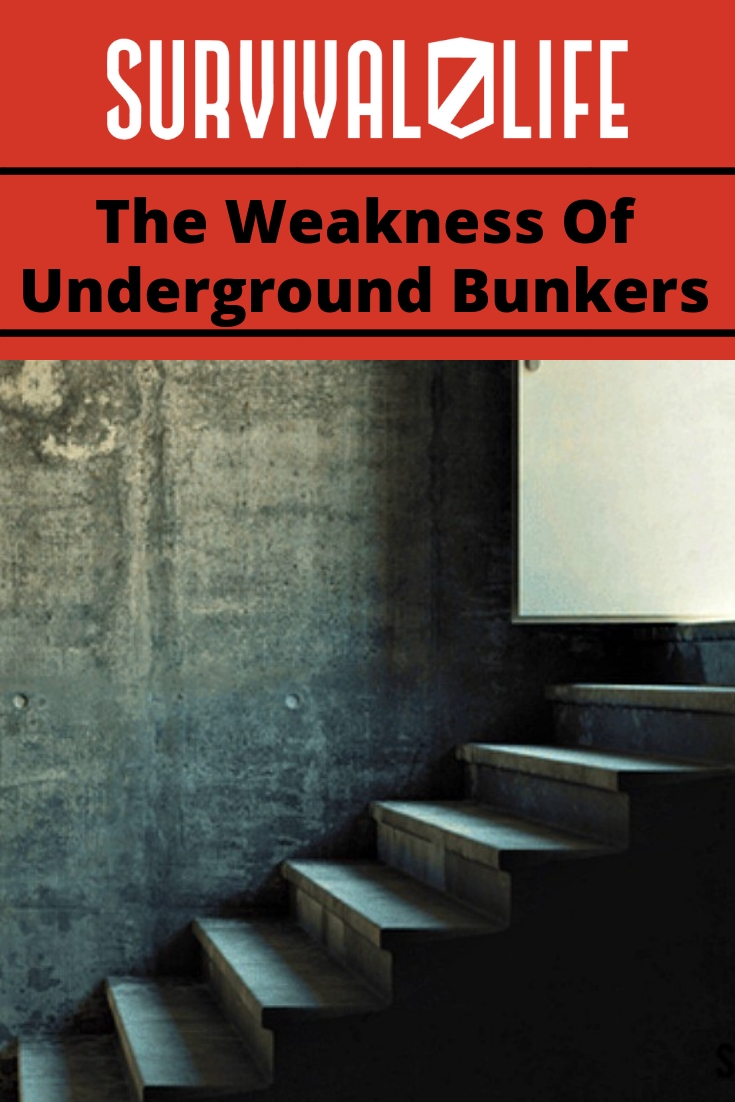The Weakness Of Underground Bunkers See more on: http://www.totalsurvival.net/
We often think of underground bunkers as being the ultimate survival backup plan. Whether it's a natural disaster, civil unrest, or the zombie apocalypse, these survival shelters can prove to be pretty useful when it comes time to batten down the hatches.
However, if they are not built properly, these bunkers can quickly throw a wrench into your survival plans. Along with stocking your bunker with everything it needs, you need to ensure the structural soundness of your shelter.
Read on to take a look at three of the most common weaknesses in underground bunkers and storm shelters.
Underground Bunkers | Important Things to Consider
Weak Entrance
Entrances are typically the weakest part of a structure. Debris from a major disaster could force the door inwards, in which case you are no longer protected from the elements and are exposed to broken remnants flying inside. You also need to be able to conceal yourself from unwanted visitors.
Your best option is to have a solid-core door, such as a mix of steel and plywood, which you can find here. A steel frame is also an integral part of your entrance. You may have the world's best storm shelter door, but a weak frame will make it useless.
You may also install a 90-degree barrier outside the door to inhibit intruders from knocking the down the door. Construct a concrete or cinder block barrier with just enough room to open the door and climb inside the shelter.
Check out if your door is FEMA approved.
No Air Circulation
Air circulation is critical. I once heard of a group of folks that hid in an underground school bus. Although this is an innovative idea, the bunker did not have adequate air circulation and the group of people baked to death.
While the ground around the walls offers protection from natural disasters and most explosions, it can also be an oven, trapping heat. You not only need proper air circulation to cycle in oxygen and maintain body temperature but also to cycle out contaminants or contagions.
A simple remedy can occur with two holes and a fan, although HEPA filters can remove airborne bacteria and viruses. You can also use UV light to disinfect the air before it is circulated. Read more about air circulation at The Omega Man.
Waste Management

The amount of time you plan on retreating into your bunker will vary depending on the situation, but you can never count on an exact estimate of time. That being said, sewage and garbage must be dealt with, to avoid harboring contagions and diseases within the underground shelter. Depending on the terrain, a septic tank or sewage system can do the trick. You may also incinerate garbage inside the shelter, as long as there is proper air circulation.
Check out this storm shelter from Lifesaver Storm Shelters of North Alabama:
Building an underground bunker is not as easy as digging a hole for people to hide. A survival situation can last for days, which means you need to make sure people won't suffocate or live with their own waste. Careful planning is a must before the building process takes place.
Did you look into the same issues when building your bunker? Tell us about it in the comments section below!

Up Next: 5 Reasons You Need A Storm Shelter in Your Home
Editor’s Note: This post was originally published in June 2014 and has been updated for quality and relevancy.
This Article Was First Found at survivallife.com Read The Original Article HereCheck Out The Post Here: The Weakness Of Underground Bunkers
No comments:
Post a Comment